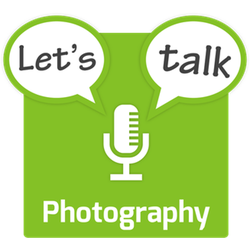Panel
- Bart Busschots (host) – @bbusschots – Flickr
In this solo show Bart ponders the art of capturing winter photographically.
While this podcast is free for you to enjoy, it’s not free for Bart to create. Please consider supporting the show by becoming a patron on Patreon.
Reminder – you can submit questions for future Q & A shows at http://lets-talk.ie/photoq
Notes
- It’s about much more than snow and frost, but let’s start there and get the obvious stuff out of the way
- Snow (and to a less extent frost) can trick your camera into under-exposing shots — you’re likely to need to add exposure compensation
- It’s very important to get the white-balance right in snow and frost
- Mostly white scenes are utterly un-forgiving of colour casts!
- Get it as right as you can in the field
- Use the eye-dropper in post to fine-tune it. Don’t be afraid to intentionally nudge a little warmer or colder than the scientifically correct value, but be gentle!
- On a practical level — batteries don’t respond well to cold
- Battery life significantly is reduced in the cold — so plan for that!
- Bring plenty of spares, and keep them as warm as you can till you need them — maybe in your pocket rather than your camera bag.
- Humans don’t respond well to cold either!, so remember to dress appropriately, paying special attention to your extremities (head, feet & hands)
- Creative suggestions
- You can choose to accentuate the feeling of cold by finding and boosting blues, e.g.:
- You can use the reds of sunset to create a great ‘fire and ice’ contrast, e.g.:

- You can make use of the natural monochromeness of a typical snow or frost scene to really draw the eye to a colourful subject, e.g.:
- No matter how bleak the weather, there are great shot out there waiting to be captured as long as you prepare well and make the effort!

- There’s more to winter than frost and snow!
- In winter time the sun makes its shallowest angle with the horizon, so both of the golden hours (around dawn and sunset) get stretched, giving more opportunities to shoot in idyllic soft warm light. As an added bonus, the morning golden hour is often frosty, giving that ‘fire and ice’ contrast: https://twitter.com/bbusschots/status/1201780810665332737/photo/1
- A low sun also creates long shadows, they can make great leading lines, or be used to add interest to foregrounds, e.g.:
- Bare trees say winter as much as anything else, and they can give any scene a wintery feel, even when there’s no frost or snow in sight, e.g.:
- Typical winter weather often includes very still mornings and evenings, often giving great opportunities to capture reflections:
- The short days and long nights mean you can capture dusk and darkness during civilised hours!













